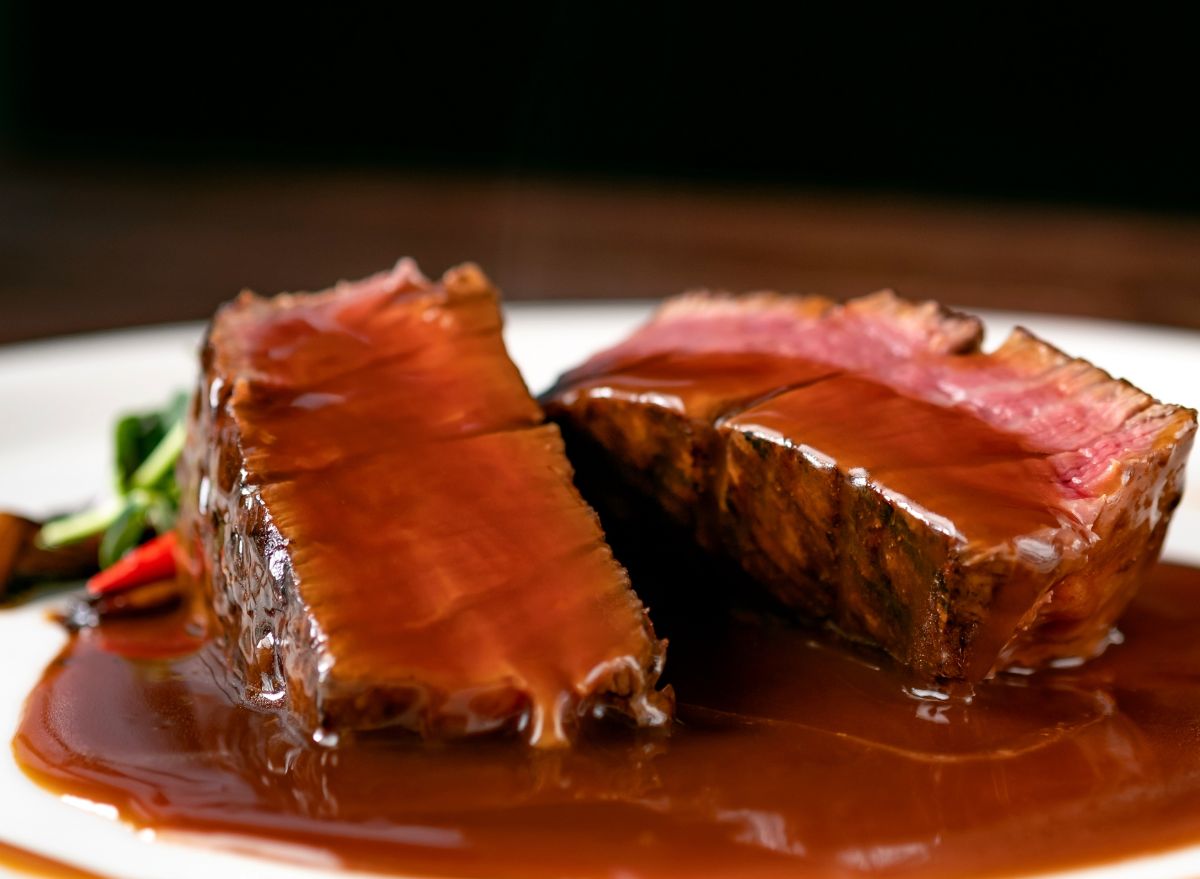The Dishes You Should Never Order at a Restaurant, According to Chefs

Dining out can be a revelatory experience that transports tastebuds to different countries, showcases cultures, and provides a wow factor that simply can't be replicated at home. Of course, not every restaurant serves up those same immersive and authentic experiences, which is why it pays to be discerning about where you spend your dining budget. Just as certain Indian dishes, Mexican meals, and brunch items are best avoided, so too are certain entrees in general.
No matter how high-quality the restaurant is, it doesn't change the fact that particular main dishes are more worthwhile than others. We've asked several chefs about how they eat and what they'd never order when dining out. Some say they'd skip the things that keep you in your comfort zone. After all, why spend money on some, say, mac and cheese, when you can easily make that stuff at home (and the world of boxed mac and cheese keeps getting more and more exciting with new options.) Others warn of dishes that "cut corners" in different ways: from serving cheap versions of ingredients that are supposed to shine to those that rely on cheap shortcuts to achieve their flavors.
For several chefs we've spoken to, there's one item that simply doesn't tolerate poor quality or preparation: steak. In addition to avoiding well-done steaks, you should pick one of the restaurant's signature cuts and avoid those that are curiously cheap or over-sauced.
"While some restaurants have buying power that helps offset a little of the cost of good steak, most of the time, a cheap steak is lower USDA-grade meat," explains Grant Morgan, executive concept chef of Hotel Drover and 97 West Kitchen & Bar in Fort Worth. Rather, for his menus, he features top-tier picks like Wagyu and Prime beef, which are definitely worth splurging on. "They are not cheap, but worth every dollar."
Russell LaCasce agrees. The executive chef of the Hotel Valley Ho in Scottsdale says that when it comes to your entrée, cheap meat is to be avoided. "Do not go for a $20 filet of beef. It's always worthwhile to pay for great cuts of meat, and you really can taste the difference."
According to Brian Hatfield, chef of Surveyor in Washington, D.C., too much sauce is another way to ruin a good steak. "A 'signature' coffee or pepper rub, or a Hawaiian marinade, is most of the time trying to cover up lower quality beef, and would hide the inherent flavor of higher quality cuts," he says. "Skipping offerings like this in favor of higher-grade, naturally flavorful cuts makes sure that you are getting the night out you deserve."
Another menu buzzword that's usually subpar in its quality is truffles, and some say it's usually a red flag. "Never order anything that has the word 'truffle' in it," advises Saura Kline, pastry chef at Local Jones in Denver's Halcyon Hotel. Unless you're at a high-class fine-dining restaurant, this usually means truffle oil, which is very rarely made with actual truffles. It tends to be used aggressively and will immediately increase the price of any dish you're eating, regardless of its actual quality.
Like truffle oil, other fragrant ingredients like bacon and cream can be all-too-easy ways for restaurants to mask flavors and cut corners. A prime example is something as classic as a risotto.
"For me personally, the number one main dish I never order at a restaurant is any sort of risotto," says Brian Motyka, executive chef of Longman & Eagle in Chicago. "While there are always exceptions to the rule, most of the time risottos are pre-cooked, heated up, finished with cream (which is a big no), and then over-cooked beyond the al dente texture that you're looking for." The chef explains that risotto is best when the rice is cooked to order, finished with butter and parmesan, and has a consistency that's at once luscious and meltingly rich. "If you find a restaurant that is cooking their rice to order, then go ahead and order it!"
The same creamy faux pas goes for good ol' mac and cheese. "An entrée I will not order while eating out is mac & cheese of any sort," notes Yulissa Acosta, chef de cuisine of Hearth '61 at Mountain Shadows resort in Paradise Valley, Arizona. While undeniably delicious, the chef says it distracts from enjoying other dishes the restaurant may have to offer. "The richness that comes from the amount of cream, cheese, and butter that is used is simply too much. Instead, ask about the restaurant's specials or go for another pasta entrée that has seasonal vegetables and some protein."
Just like an overly creamy bowl of pasta, an overuse of bacon can be a sign of something gone awry. "Avoid 'fish specials' with bacon," warns Eric Duchene, executive chef of the JW Marriott Scottsdale Camelback Inn Resort & Spa. "Bacon is used to cover up the smell of old fish." Similarly, Duchene notes that raw fish should not be ordered on Sunday nights, because "restaurants don't receive deliveries on Sunday, so you will not get the freshest products when you order on Sunday night."
At the end of the day, whether it's an all-too-familiar bowl of cheesy pasta or a low-quality steak hiding under mushroom sauce, restaurant dishes need to bring the kind of wow factor you can't replicate at home. This is why Oscar Cabezas generally avoids things that feel too mundane. The executive chef of California's Teleferic Barcelona explains that some people eat out because they don't like cooking, while others go to restaurants to get inspired.
"When I go to a restaurant, I want to be wowed by the outstanding and unexpected food that I wouldn't think of making at home."









